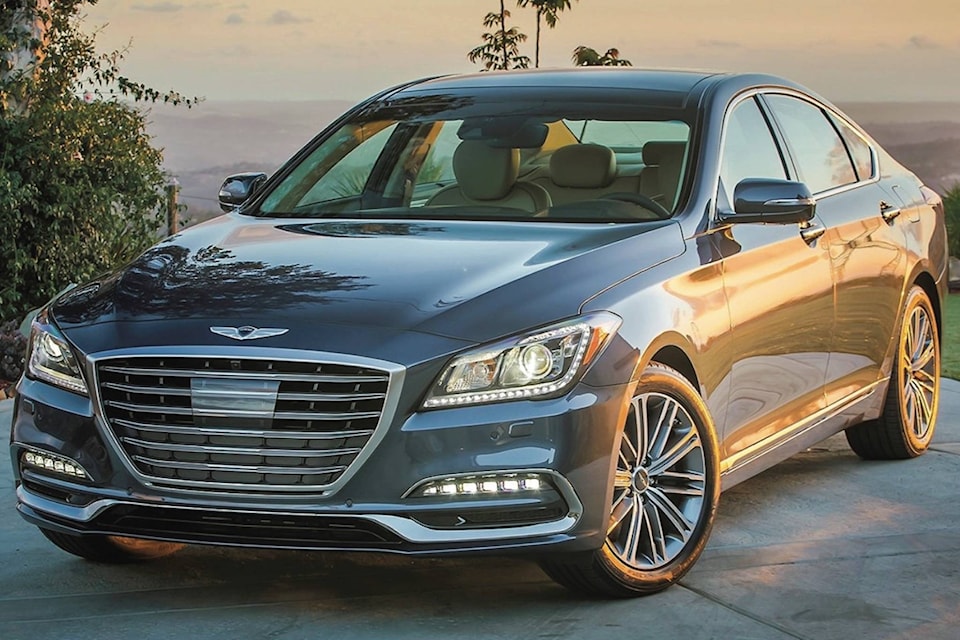Will gasoline-powered Minis become extinct?
That’s the scuttlebutt from The Spy Guy’s intel gatherers. They’re hearing that parent company BMW will reduce the number of Mini models in a couple of years to just the current two-door Mini Cooper and the larger Mini Countryman, both of which will use battery-electric power exclusively. For 2020, a Mini Cooper SE electric is expected to join the group. There’s also word that two-seat all-electric coupe called the Mini Rocketman, which was recently viewed in concept form, could possibly join the lineup. If true, that could displace the Mini Cooper four-door and convertible as well as the Mini Clubman wagon. At this point it appears that the current Mini lineup will be maintained at least through to the 2021 model year.
Major changes are afoot at Mini with electrification and the potential of a new Rocketman model (concept pictured) that could displace some other Mini models. Photo: Mini
Ford drops the details for the GT500:
The Sleuth is anxiously awaiting the arrival of the Mustang-based hot rod later this year. Think of it as a GT350 with a major power infusion. The 2020 Shelby GT500 will be fitted with a 5.2-litre supercharged V-8 with an official rating of 760 horsepower and 625 pound-feet of torque. It will be connected to a seven-speed paddle-shifted transmission from Tremec that will send power to the rear wheels through a carbon-fibre driveshaft. Each shift will take as little as eight/100th of a second, which is significantly quicker than any human can do through a manually controlled gearbox. Zero to 60 mph (96 km/h) is estimated to take less than three seconds, while zero to 100 mph (160 km/h) will take about 10.6 seconds, or nearly the time it will take for the GT500 to reach the quarter-mile mark from rest. The base MSRP is about $95,000 in Canada, but finding one for that price will likely be a challenge.
The GT500’s supercharged 5.2-litre V-8 is rated at 760 horsepower. Photo: Ford
It’s not easy competing with The Big Three domestic automakers in the pickup truck game:
That seems apparent to The Sleuth after hearing that Nissan is dropping the Titan XD truck model from the lineup for the 2020 model year. That cancellation means that the model’s Cummins-built V-8 turbo-diesel — 310 horsepower and 555 pound-feet of torque — is also history. At the same time, the regular (single) cab Titan will no longer be available. For 2020, all remaining Titan trim levels will come with the existing 390-horsepower 5.6-liter V-8, but will receive new front and rear styling as well as revised interiors with larger touchscreens.
Nissan is dropping the diesel-powered version of the Titan pickup. Photo: Nissan
Not-quite-new beginning for the Genesis G80:
The Sleuth’s operatives are reporting that a mild makeover is coming for the luxury nameplate. Although the G80’s platform carries over, there’s a new front end (including grille) inspired by the Genesis Essentia coupe. There are also slight changes to the roofline behind the rear doors, and a spoiler is being incorporated into a trunk lid. Although the G80’s 311-horsepower 3.8-litre V-6 and 365-horsepower 3.3-litre twin-turbo V-6 will carry over, there’s speculation that the optional 5.0-litre non-turbo V-8 will form part of a new plug-in hybrid system. The G70, G80, G90 sedans are expected to be joined by a new GV80 midsize tall wagon, to be revealed sometime in 2020.
The G80 — current model pictured — will receive some significant styling changes, although the engine range stays the same. Photo: Genesis
What’s to become of the NSX?
It’s the burning question on The Sleuth’s mind now that details and pricing for the 2020 Corvette have been released. The midengine Chevrolet that comes with a 495-horsepower V-8 should closely match the (also mid-engine) NSX in performance, but the Corvette has a base price of about $70,000 in Canada. That’s about $130,000 less than the base price for the hybrid Acura, of which less than 200 examples were sold in North America in 2018. Without question, the NSX is one quick ride, as The Sneaky One knows first hand, but how will NSX sales be impacted by the new ’Vette? While most of the 2020 Corvette production has been spoken for, NSX sales appear to be unaffected, perhaps implying that NSX fans are just as diehard as Corvette fans.
Base price to base price, the NSX costs about $130,000 more than the new Corvette. Although the higher-end versions of the previous Corvette are probably as capable as the NSX, the new midengine Corvette draws a more direct comparison. Photo: Acura.
Ups and downs
Up: Hybrid engines are coming to IndyCar:
Beginning with the 2022 racing season, all of the league’s racecars will run using internal-combustion/electric power systems. The change is expected to increase output to “at least” 900 horsepower from 550 to 700 horses. Also increasing is the size of the V-6 engines to 2.4 litres from the current 2.2-litre displacement. The hybrids will be part of a new IndyCar body/chassis package that will continue to use Honda- or General Motors-designed powerplants.
Up: Netflix is introducing Hyperdrive:
The new reality series, dubbed “the most spectacular car competition on earth” is available on the TV streaming service. In each of the first season’s 10 episodes, non-professional drivers from various countries the world must navigate a large obstacle course that has been set up in an abandoned industrial complex. Actor Charlize Theron is the executive producer of Hyperdrive.
Interested in new or used vehicles? Visit TodaysDrive.com today!
-written by Wheelbase Media
